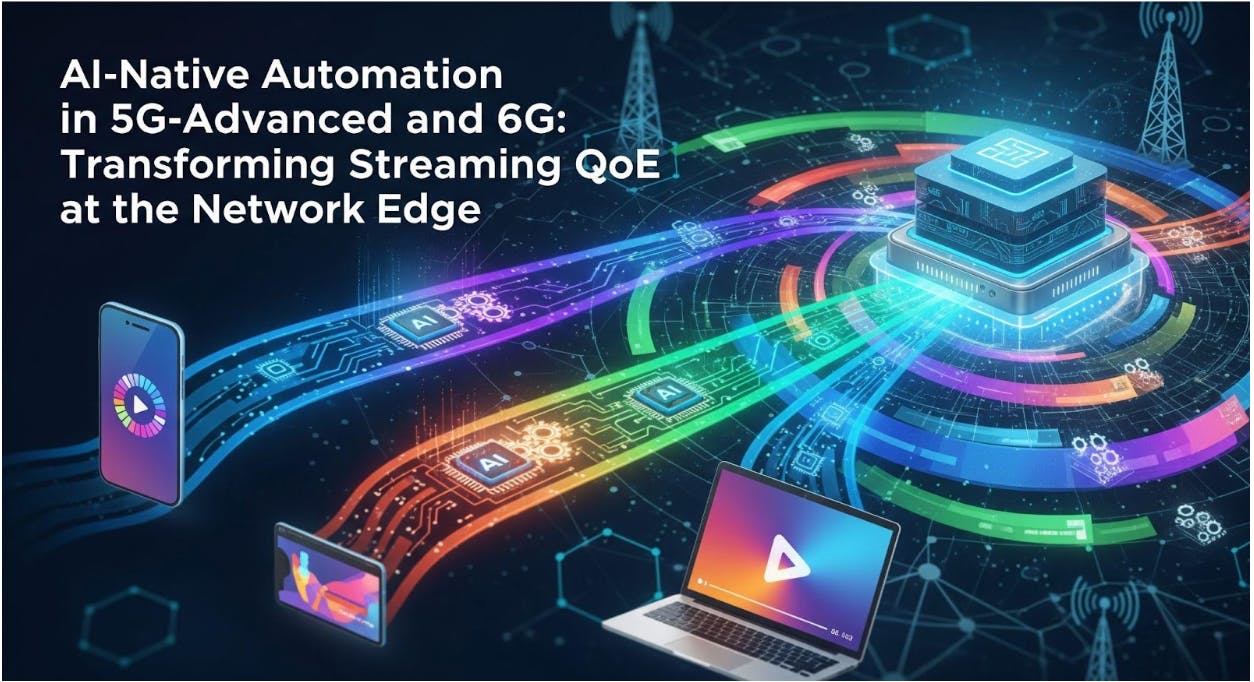With video projected to comprise 82% of Internet traffic by 2027, hosting live events with encouraging quality is more important than ever. Each second of delay can decrease engagement by 20%, and users are still abandoning service for a little bit of buffering.
With the rollout of 5G-Advanced and 6G on the horizon, users require ultra-low latency with high throughput - no longer a 'nice to have', but a 'must have' and expected especially in 8K, XR, and much of game streaming via cloud. Achieving these quality expectations will not only take extreme speed but responsive networks programmed to exceed smart value-added QoE for streaming and entertainment.
AI-native automation can scale unique QoE, but we remain trapped in siloed systems with outdated internal business policies and procedures.
The real test is not how to import machine learning AI but simply how to do AI right at the edge! Streaming has now become chaotic across fast-moving environments- city towers, edge servers, content aggregators, mobile users, and multi-CDN. So, streaming and the associated QoE can now move in countless ways simultaneously.
What ISO, TSRO, and similar static tools allow for post-suffering, as they react too late when the frustration of a stopping point of view has been reached. And data on each user and numerous other users via the flowchart of the transmission path is in constant flux; it is effectively impossible to understand what catastrophe occurred and where, with tranches of data scattered across the entirety of the RAN, Core, CDN, and app layer.
As the expectation of seamless, flawless, and full 4K streams continues to climb, real-time AI-orchestrated service workflows appear to be significant and unattainable gaps in service!
The fix?
An AI-native control plane that predicts and resolves problems before users even notice.
1️. Edge-Centric Predictive QoE Modeling: Edge nodes are evolving from small data centers into decision engines in real time. With AI at the edge, we can anticipate and mitigate streaming interruptions by using local indicators such as buffer levels, handovers, and user movement. Federated learning allows these models to continue evolving regionally without having any detrimental effects on privacy. Imagine a streaming app on a train that predicts tower congestion while adjusting bitrate on the fly. The ability to move networks from reactionary to pro-active is transforming the streaming experience, making it smoother, more intelligent, and more personalized for users... anywhere!
2️. Closed-Loop Network Slicing with QoE: Feedback Network slicing allows multiple virtual networks to share infrastructure, but most still prioritize technical metrics over real user experience. AI-native automation takes this to the next level by taking real-time QoE data and adapting slices in real time. If a human ability user or AR/VR stream drops, it can route traffic away, change bandwidth, or change RAN priorities with no people involved. This creates real-time and dynamic slicing, which keeps streams stable through network changes.
3️. Cross-Layer Root Cause Analysis with Explainable AI: It's never easy to identify the root cause of streaming issues in complex multi-domain networks—was it the server, a CDN miss, RAN congestion, or device buffering? Explainable AI (XAI) changes this by correlating data across the transport, application, and radio layers to detect and explain anomalies. XAI doesn't only detects the faubut lt,also it explains why it happened, and this helps both operations teams, as well as autonomous systems, to identify root causes and fix problems more intelligently and quickly.
4️. Intent-Based Streaming Policy Management: Operators need to evolve from static, threshold-based rules and toward intent-based policy engines. An example of a business intent might be, “Deliver live sports in ultra-low-latency to premium subscribers in metro areas.” AI would take such high-level intent and translate it into low-level configurations: managing edge caches, modulating transcoding profiles, prioritizing uplink traffic, prioritizing downlink traffic, etc. If the engine detects a deviation, such as increased rebuffering during the live sports broadcast, it can self-correct by changing policies in real-time.
Conclusion
Toward Autonomous Streaming Networks, AI-native automation is no longer an option; it’s vital to creating intelligent, resilient networks that can keep up with how we stream today (and tomorrow). As we transition from 5G-Advanced to 6G, the winners will be the ones that can put together edge-based intelligence, intent-based control, plus some explainability. Do it right, and you’re not just reducing churn - you’re setting the pace in streaming. Mess it up? At best you can settle for a buffering wheel.


